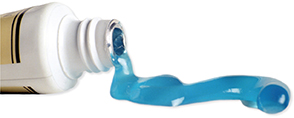Figure 11 A compound of erbium (Er) and oxygen is used to tint glass pink.

The metals in groups 3 through 12 are called transition metals. Transition metals are elements that form a bridge between the elements on the left and right sides of the table. Transition elements, such as copper and silver, were among the first elements discovered. One property of many transition metals is their ability to form compounds with distinctive colors. The How It Works box on page 137 describes the use of transition elements in the production of colored glass.
Some transition elements have more properties in common than elements in other groups. This is especially true of elements in the lanthanide and actinide series. These elements are so similar that chemists in the 1800s had difficulty separating them when they were found mixed together in nature. A compound of erbium and oxygen was used to tint the lenses shown in Figure 11.
Nonmetals
In Figure 7, nonmetals are represented by yellow boxes. As their name implies, nonmetals generally have properties opposite to those of metals. Nonmetals are elements that are poor conductors of heat and electric current. Because nonmetals have low boiling points, many nonmetals are gases at room temperature. In fact, all the gases in the periodic table are nonmetals. The nonmetals that are solids at room temperature tend to be brittle. If they are hit with a hammer, they shatter or crumble.
Nonmetals vary as much in their chemical properties as they do in their physical properties. Some nonmetals are extremely reactive, some hardly react at all, and some fall somewhere in between. Fluorine in Group 17 is the most reactive nonmetal. It even forms compounds with some gases in Group 18, which are the least reactive elements in the table. The toothpaste in Figure 12 contains a compound of the nonmetal fluorine and the metal sodium. This compound helps to protect your teeth against decay.
Metalloids
In the periodic table in Figure 7, metalloids are represented by green boxes. Metalloids are elements with properties that fall between those of metals and nonmetals. For example, metals are good conductors of electric current and nonmetals are poor conductors of electric current. A metalloid's ability to conduct electric current varies with temperature. Pure silicon (Si) and germanium (Ge) are good insulators at low temperatures and good conductors at high temperatures.
Figure 12 Toothpaste contains a compound that helps to protect teeth from tooth decay. The compound is formed from the nonmetal fluorine and the metal sodium.






 Which type of metals tend to form compounds with distinctive colors?
Which type of metals tend to form compounds with distinctive colors?